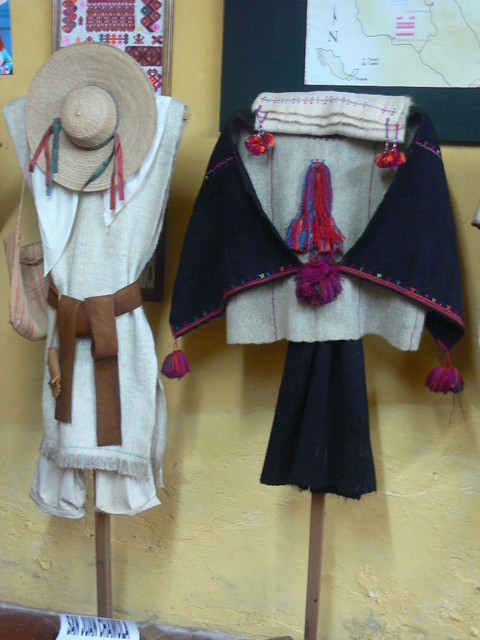 Hundreds of people cross the town square at San Juan Chamula while I drink my Mexican tangerine soft drink and Patrick explains about the church on the other side. Most of the people going about their business are Chamula, one of the ethnic groups descended from the Tzotzil Maya. Even we can identify the Chamula women by the black woollen skirts they wear under woven tunics. The indigenous people have great pride in their traditional clothes that are unique to each community and we have been introduced to a massive collection in the Santo Domingo convent and in Sergio Cantro’s burns centre.
Hundreds of people cross the town square at San Juan Chamula while I drink my Mexican tangerine soft drink and Patrick explains about the church on the other side. Most of the people going about their business are Chamula, one of the ethnic groups descended from the Tzotzil Maya. Even we can identify the Chamula women by the black woollen skirts they wear under woven tunics. The indigenous people have great pride in their traditional clothes that are unique to each community and we have been introduced to a massive collection in the Santo Domingo convent and in Sergio Cantro’s burns centre.
Sergio, who has built contacts with the indigenous community as he volunteered his time to treat burn victims, told us that each ethnic group has their own business speciality and the square is surrounded by shops selling fruit and vegetables. Patrick, our guide, assures us that no Mexican would buy imported groceries when they had access to fresher, tastier and cheaper Chamula products, so this is one place where corporate farming is struggling.
As we watch, two groups of men cross the square from opposite sides, one in black coats and one in white. Both are made from wool in the same way as the skirts, but the coats signify authority. Civil leaders wear white and religious leaders wear black. Unfortunately, we were unable to take our own pictures because most indigenous Mexicans believe that they lose part of their soul in the process.